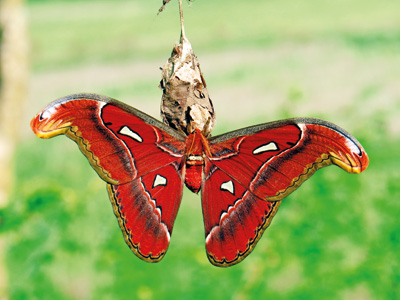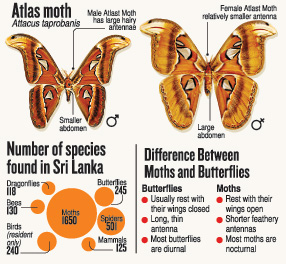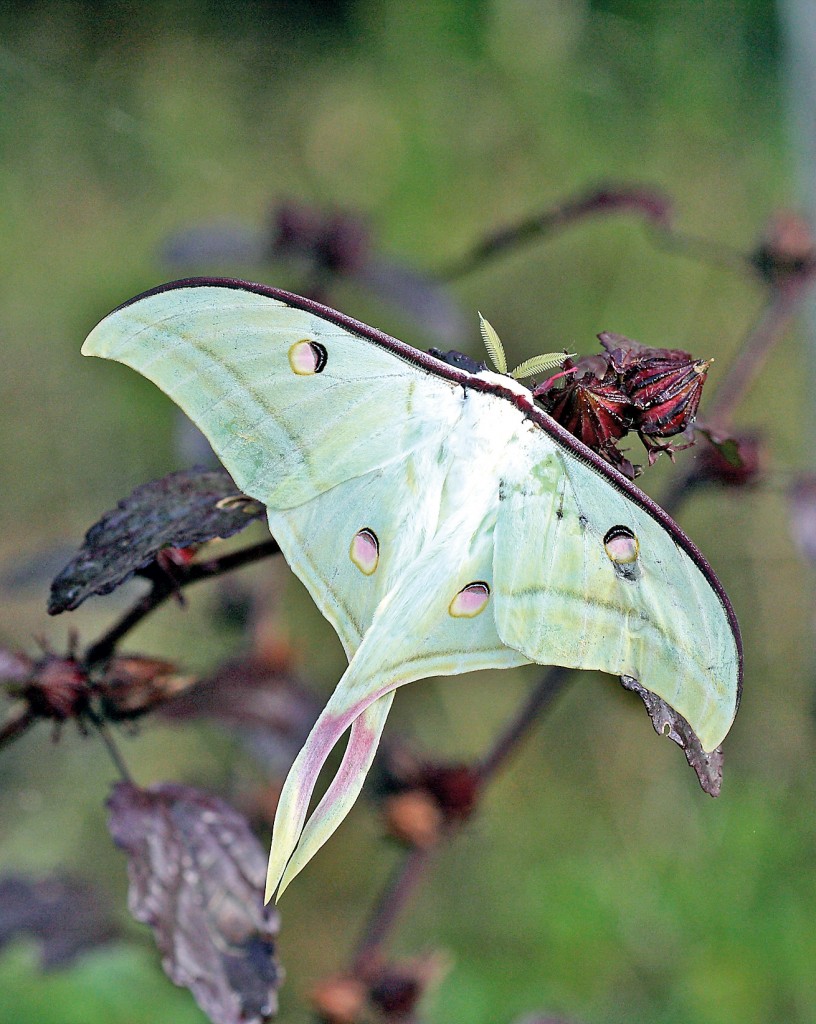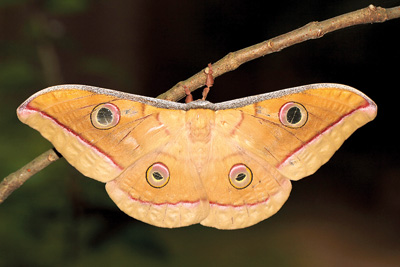News
‘Made for mating’ giant moth causes stir
A huge, butterfly-like creature sitting calmly inside a house in Ratnapura surprised its owners earlier this week and, as news spread, curious neighbours flocked in to see a beautiful creature none of them had ever seen before – one of the largest moths in the world.

Male Atlast Moth (Attacus taprobanis) - Nuwan Chathuranga
It was an Atlas moth (Attacus taprobanis) – the largest moth species in Sri Lanka, with a wingspan of 25-30cm and a wing surface area of about 400 square cm.
The giant insect’s visit was perfectly timed as this week is Moth Week, celebrating the hundreds of moth species in Sri Lanka.
“The Ratnapura moth is a female,” moth researcher Nuwan Chathuranga said.
Atlas moth caterpillars are eating machines but the adult Atlas moth cannot eat as its mouth is not fully developed, so its lifespan is very short; the moths’ sole aim is to mate and lay eggs.
This explains why the female moth found in Ratnapura sat in one spot, its birthplace, without straying to look for food as other insects do.
After emerging from a cocoon, the female Atlas moth usually perches near its birthplace, waiting for males to be attracted to the strong pheromone or sex scent it emits.
A moth antenna has fine hairs containing smell receptors that can identify chemical compounds from long distance. The male Atlas moth’s antennae pick up sex signals from a long distance and send it rushing to the female’s irresistible invitation.
Moths undergo a complete metamorphosis through four different life stages, like butterflies. The larva of the moth emerges from an egg in the form of a caterpillar that feeds on leaves. The caterpillar then turns into a pupa protected by a cocoon or pupating underground before emerging as an adult moth.
“While we do not see Atlas moths every day, they are not that rare as Atlas moths are often reported even in home gardens,” said Himesh Jayasinghe of the Butterfly Conservation Society of Sri Lanka (BCSS).
Other large and beautiful moths found in this country include lunar moths, also called moon moths, Mr. Jayasinghe said.
While the Centre for Entomological Studies Ankara (Turkey), published a study of Lepidoptera (butterflies and moths) in Sri Lanka in 2012 that states Sri Lanka is home to 245 butterfly species and 1,658 moth species, Mr. Chathuranga estimates that there could be more than 2,000 species of moths in Sri Lanka.
“I encounter lot of new species of moths during field observations – Sri Lanka has rich moth diversity and further studies will surely increase the number of moths found here,” he said.
Moths are mostly nocturnal and usually rest with its wings down compared to butterflies, that rest with wings closed upward. Moths’ antennae become thinner at the end whilst butterflies usually have a little bob or ball at the end of theirs.
Many consider moths to be dangerous pests while caterpillars. The fall army worm caterpillars, locally known as “sena”, that were responsible for large-scale crop damage recently, were at the larval stage of the fall army worm moth.
“Only about 10 per cent of total moth species are to be considered agricultural pests,” Mr. Chathuranga emphasised.“Out of them, only a handful should be considered major agricultural pests.”
Those interested at studying moths can join the Butterfly Conservation Society of Sri Lanka at http://bcssl.lk/

Lunar Moth - Himesh Jayasinghe.

Endemic Antheraea cingalesa (c) Himesh Jayasinghe.

